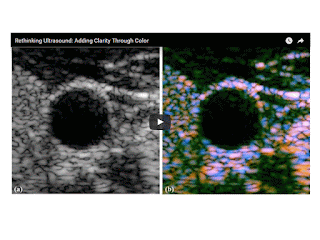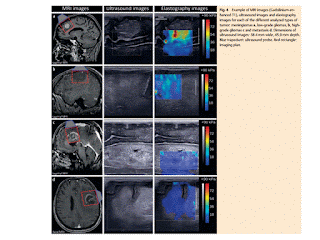TO TRAIN the TRAINERS 2017 at MEDIC CENTER MARCH 4-5, 2017
http://thienhungmedic.blogspot.com/2007/05/ectopic-thyroid.html
http://thienhungmedic.blogspot.com/2007/06/2-focal-ectopic-thyroid-jasmine-thanh.html
RANZCR-AOCR 2012 / R-0006 / Acoustic Radiation Force Impulse ...
dx.doi.org/10.1594/ranzcraocr2012/R-0006
... Impulse (ARFI) Imaging of Thyroid Nodules at MEDIC CENTER" by: "H. Nguyen" ... of elastography of ultrasound to measure quantitatively the tissue stiffness. ... Nguyen SonologistMEDIC MEDICAL CENTER Ho Chi Minh City VIETNAM.
dx.doi.org/10.1594/ranzcraocr2012/R-0006
... Impulse (ARFI) Imaging of Thyroid Nodules at MEDIC CENTER" by: "H. Nguyen" ... of elastography of ultrasound to measure quantitatively the tissue stiffness. ... Nguyen SonologistMEDIC MEDICAL CENTER Ho Chi Minh City VIETNAM.
Review of possibility of ultrasound in differentiating malignant from ...
https://insights.ovid.com/medical-imaging-radiology...ultrasound.../01329149
by NC Tuan - 2012
Review of possibility of ultrasound in differentiating malignant from benign thyroid nodules. Journal ofMedical Imaging and Radiology Oncology. 56():6, Aug ...
https://insights.ovid.com/medical-imaging-radiology...ultrasound.../01329149
by NC Tuan - 2012
Review of possibility of ultrasound in differentiating malignant from benign thyroid nodules. Journal ofMedical Imaging and Radiology Oncology. 56():6, Aug ...
Page 9 - VIETNAMESE MEDIC ULTRASOUND - Rssing.com
medic72.rssing.com/chan-16374269/all_p9.html
Transthoracic ultrasound of this mass revealed a solid hypovascular mass, size of 10 cm, no moving with respiration. Thyroid ultrasound scan was normal but ...
BÀI SOẠN VỀ SIÊU ÂM CHẨN ĐOÁN: tháng sáu 2015
www.nguyenthienhung.com/2015_06_01_archive.html
Abstract 4 A Predictive Model for Selecting Malignant Thyroid Nodules in Patients .... Được đăng bởiVIETNAMESE MEDIC ULTRASOUND DIAGNOSIS vào lúc ...
vietnamese ultrasound | Ultrasound MEDIC VN's Blog
https://hungnguyenthien.wordpress.com/category/vietnamese-ultrasound/
Apr 6, 2012 - Posts about vietnamese ultrasound written by hungnguyenthien. ... Impulse (ARFI
VIETNAMESE MEDIC ULTRASOUND: CASE 338: THYROID ...
www.ultrasoundmedicvn.com/2015/10/case-338-thyroid-cancer-dr-phan-thanh.html
Oct 5, 2015 - CASE 338: THYROID CANCER, Dr PHAN THANH HẢI, MEDIC ... Man 30yo, in general check-up, ultrasound detected thyroid tumor at right ...
VIETNAMESE MEDIC ULTRASOUND: CASE 319: LINGUAL ...
www.ultrasoundmedicvn.com/2015/06/case-319-lingual-thyroid-dr-phan-thanh.html
Jun 22, 2015 - SONOLOGIST REPORTED THAT CANNOT FIND OUT THYROID GLAND AT THE NECK. ULTRASOUND CANNOT FIND THYROID GLAND ...
VIETNAMESE MEDIC ULTRASOUND: CASE 327: INTRATHORACIC ...
www.ultrasoundmedicvn.com/2015/08/case-327-intrathoracic-thyroid-tumor-dr.html
Aug 1, 2015 - Transthoracic ultrasound of this mass revealed a solid hypovascular mass, size of 10 cm, no moving with respiration. Thyroid ultrasound scan ...
MEDIC Vietnamese Ultrasound Diagnosis - Blogger
https://www.blogger.com/feeds/5708998464697842004/posts/default
Oct 22, 2009 - At that TIME, ULTRASOUND MEDIC DISCLOSED FORTUNATELY a ... the FEMUR, Dr LÊ THANH LIÊM, MEDIC MEDICAL CENTER, HCMC, VIETNAM ..... 2 Focal Ectopic Thyroid, Jasmine Thanh Xuan, Ng Thien Hung, Phan ...
You visited this page.
1488: Ultrasound Predicts Treatment of Thyroid Benign Cystic Lesions ...
www.umbjournal.org/article/S0301-5629(09)01133-8/abstract
by CT Nguyen - 2009
1488: Ultrasound Predicts Treatment of Thyroid Benign Cystic Lesions with Aspirations and Levothyroxin. Cuong Tuan ... Medic Medical Center, Vietnam.
ARFI for thyroid nodules | Ultrasound MEDIC VN's Blog
hungnguyenthien.wordpress.com/tag/arfi-for-thyroid-nodules/
Apr 6, 2012 - Posted in ultrasound research, vietnamese ultrasound | Tagged ARFI for thyroidnodules, colloidal cyst, eSie Touch, follicular lesion, papillary ...
MEDIC Vietnamese Ultrasound Diagnosis: Ectopic Lingual Thyroid, Le ...
thienhungmedic.blogspot.com/2007/05/ectopic-thyroid.html
May 14, 2007 - Ectopic Lingual Thyroid, Le van Tai, Nguyen Thien Hung, Medic Medical Center, HCMC, Vietnam. We report the case of a 36 year-old female ...
Vietnamese Medic Ultrasound Case Thyroid Parathyroid Tumor ...
yeslk.com/vietnamese-medic-ultrasound-case-thyroid-parathyroid-tumor/
Vietnamese Medic Ultrasound Case Thyroid Parathyroid Tumor Pictures And Photos Vietnamese Medic Ultrasound Case Thyroid Parathyroid Tumor - Yeslk
yeslk.com/vietnamese-medic-ultrasound-case-thyroid-parathyroid-tumor/
Vietnamese Medic Ultrasound Case Thyroid Parathyroid Tumor Pictures And Photos Vietnamese Medic Ultrasound Case Thyroid Parathyroid Tumor - Yeslk
MEDIC Hòa Hảo - Case Report 338: Bệnh nhân nam 30 tuổi - Facebook
https://www.facebook.com/TTYKMedic/posts/1160629363951866
Translate this page
To see more from MEDIC Hòa Hảo on Facebook, log in or create an account. ... VIETNAMESE MEDIC ULTRASOUND: CAE 338: THYROID CANCER, ...Translate this page
Échographie Thyroïde Nodules - Résultats d'AOL Image Search
www.recherche.aol.fr/aol/image?imgId...v_t=neuf-redir&q...s...
Préférences ... Ultrasound in Patients with Differentiated Thyroid Cancer ... VIETNAMESE MEDIC ULTRASOUND: CASE 167:THYROID NODULE in a GIRL, Dr ..
















